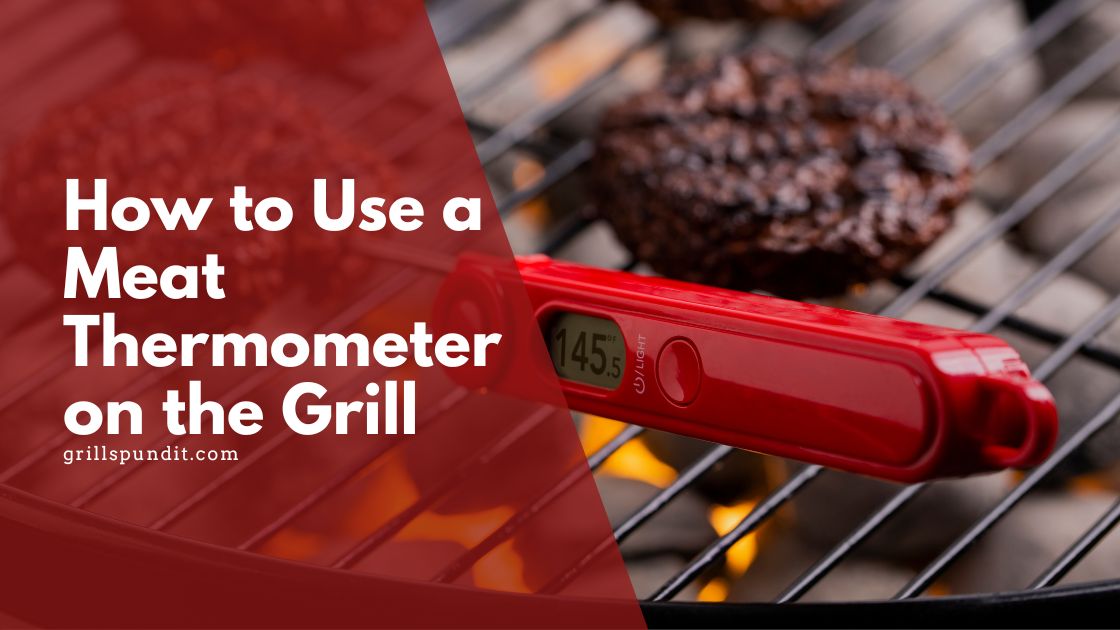Welcome, grill masters and enthusiasts! Mastering the art of grilling is not just about the sizzle and smoke, but also about ensuring the perfect internal temperature for the juiciest and most flavorful results. Whether you’re a seasoned griller or a newcomer to this culinary technique, understanding how to use a meat thermometer on the grill is crucial for your success.
The beauty of a meat thermometer lies in its ability to take the guesswork out of grilling, allowing you to achieve desired doneness every time. In this guide, we’ll walk you through the steps and techniques to effectively use a meat thermometer, ensuring that your grilling adventures result in perfectly cooked, mouth-watering meals. So, let’s get started and turn you into a true grill maestro!
How to Use a Meat Thermometer on the Grill Quick Guide
By following these steps, you can guarantee a perfectly grilled meal every time. Master this skill and impress others with your grilling prowess! For more details continue below.
- Preheat the Grill
- Prepare the Meat
- Insert the Meat Thermometer
- Monitor the Temperature
- Know the Perfect Temperature
- Let it Rest
How to Use a Meat Thermometer on the Grill Steps
With these steps, you can be confident about how to use a meat thermometer on the grill and make sure that each grilling session is successful. Whether it’s steak, chicken, or pork, you’ll be able to achieve perfect doneness every time!
Preheating the Grill

Begin by preheating your grill. The temperature will depend on the type of meat you’ll be grilling.
Preheating your grill is key to a successful grilling session. A preheated grill will help cook the meat evenly and seal it in flavor. Before putting anything on it, turn up the heat and keep it at a medium to high setting for 10-15 minutes until the desired temperature has been reached.
Preparing the Meat

Once your grill is preheated, it’s time to prepare the meat. While your grill is preheating, season your meat as desired.
Make sure to season and marinate as desired before placing the meat on the grill. Rub spices into the meat, creating a flavorful crust that will help keep moisture in.
Inserting the Thermometer

Once your meat is on the grill, insert the thermometer into the thickest part of the meat, ensuring it doesn’t touch any bone. The thermometer should be inserted into the meat horizontally and deep enough to get an accurate reading.
Insert your thermometer horizontally into the thickest part of the meat, making sure it doesn’t touch any bone. This positioning ensures an accurate reading.
Monitoring the Temperature

Regularly check the thermometer to monitor the internal temperature of the meat.
Use the thermometer to monitor and check the internal temperature of your meat as it cooks. This will help you control how done your meat is and prevent overcooking or undercooking.
Knowing the Perfect Temperature

Different types of meat require different temperatures for optimal taste and safety. For steak, cook to an internal temperature of 145°F; poultry should reach a temperature of 165°F.
Each type of meat has its own ideal internal temperature for optimal taste and safety. For example, steak is best at 145°F, while poultry should reach a temperature of 165°F.
Letting it Rest

Once your meat has reached its ideal temperature, remove the thermometer and let the meat rest on a cutting board for several minutes before serving. This will let the juices redistribute and prevent them from spilling out when you cut into your meat.
Remember, check the internal temperature early and often. With a meat thermometer, you can rest assured that your grill sessions will always be delicious!
Common Questions About How to Use a Meat Thermometer on the Grill
If you still have questions about how to use a meat thermometer on the grill, read through our frequently asked questions below.
Can I put a meat thermometer directly into the grill?
It’s not recommended to insert your meat thermometer directly into the hot grates. Doing so can damage the thermometer and potentially create hot spots that could lead to uneven cooking.
How long should I leave the thermometer in while monitoring the temperature?
It’s important to check the thermometer regularly while grilling. Depending on the size of the meat, you may need to leave it in for as little as 30 seconds or up to several minutes before checking again.
What is the best type of thermometer for grilling?
Digital thermometers are ideal for grilling because they are accurate and easy to read. Look for models with a long probe and an easy-to-read display. Some digital thermometers even come with preprogrammed settings, allowing you to easily adjust the temperature depending on the type of meat you’re grilling.
What are some tips for using a grill like a pro?
Now that you’ve mastered how to use a meat thermometer on the grill, here are some additional tips on how to become a true grill maestro.
- Start with high heat for searing and then lower the temperature to finish cooking. This will help you achieve a delicious crust on your meats and vegetables while keeping them juicy and tender inside.
- Make sure to keep your grill clean! Grease buildup can cause flare-ups, resulting in burned food and an unpleasant smoky taste.
- Use indirect heat for larger cuts of meat or tougher vegetables. Indirect heat will ensure that the food cooks evenly without burning on the outside while remaining tender inside.
Video The Right Way to Use a Meat Thermometer
Ready to master the art of grilling? Watch this video for a step-by-step guide on how to use a meat thermometer.
Final Thoughts
In conclusion, understanding how to use a meat thermometer on the grill is a skill that can drastically improve your grilling results, ensuring perfectly cooked meat every time. Remember, each meat has its own ideal internal temperature, and regular monitoring is crucial.
Most importantly, grilling should be a fun and enjoyable process. With these tips and techniques, you have all the tools you need to become a grill master. Now, put on that apron, fire up that grill, and let the grilling adventures begin. Happy grilling, everyone!



